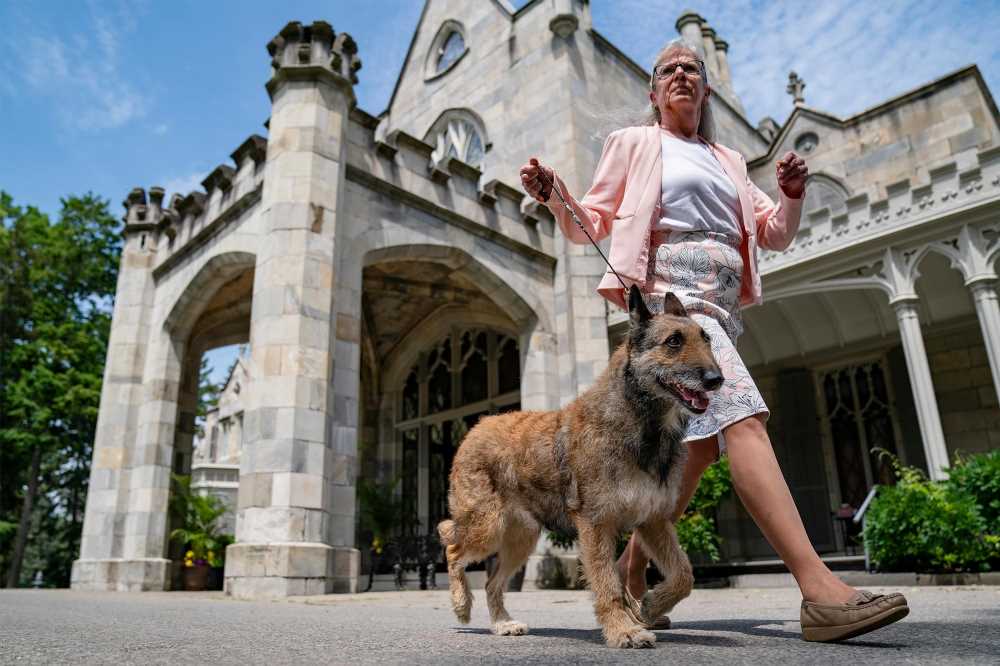More On:
westminster dog show
Westminster dog show will be delayed and held outdoors
Unbeweavable standard poodle named Westminster’s best in show
Diva dogs have crazy beauty routines before Westminster Dog Show
Westminster’s King makes Broadway debut in ‘Pretty Woman’
It’s time to raise the woof!
This weekend’s 145th annual Westminster Kennel Club Dog Show may not be open to live spectators, but the show — held outdoors at the Lyndhurst mansion in Tarrytown, New York, for the first time — will still go on, with live coverage Saturday and Sunday on Fox Sports as well as streamed through Westminster’s website. And it will still be packed with pampered pups who are better groomed than most humans.
The annual pooch parade is one of the longest-running sports in the United States, second to the 146-year-old Kentucky Derby. This year, they’ve added four new breeds to the competition to bring the total to 209 American Kennel Club-recognized breeds. And Westminster Kennel Club’s resident canine expert and spokesperson, Gail Miller Bisher, has encyclopedic knowledge of them all.
“They go through quite a rigorous qualifying period to become a registered breed,” said Bisher. “It can sometimes take up to 10 years for a dog breed club to make it through the system. It’s a numbers game — every time a new breed comes in, the odds of you winning declines. The more dogs there are, the harder it is [to win].”
Meet the new faces of the show: They’ll steal your heart and perhaps your toy bone.
Dogo Argentino
Developed in Argentina’s Córdoba province in the 1920s, this dog, part of the Working Group, was bred to hunt and catch dangerous game such as wild boar, pumas and other destructive predators. (It’s one of 10 breeds thought to have the ability to kill a lion.)
They are very athletic and powerful, according to Bisher, noting their courage and “intimidating” nature, with their big head and thick neck, not unlike a bodybuilder.
“They’re a big, strong dog and need to be socialized and trained at a young age,” she said of the dog that can grow to 100 pounds.
Biewer terrier
This fluffy head-turner in the Toy Group, pronounced “beaver,” is the new cat’s meow. According to the AKC, this “whimsical” dog, first developed in Germany in the 1980s, is “lighthearted, intelligent, and amusing — an elegant, long-haired dog with a breed signature ponytail.”
Sure, it looks like a total diva, but according to Bisher, this dog is “humble, but showy — we train them to be showy.”
It’s similar in size and shape to a Yorkshire terrier, with a coat texture not as fine and doesn’t lay as flat as a Yorkie’s, revealing striking colors — white with beautiful black and mahogany markings.
“They’re a fun-loving, happy little companion dog,” said Bisher. “It’s a great dog for the city, and I think they’re going to be really popular.”
Barbet
With roots dating back to 16th-century France, this water dog is practically prehistoric in dog years. Part of the Sporting Group, the medium-sized bow-wow is a “joyful, bright, and loyal companion,” a rustic breed that locates, flushes and retrieves birds.
“They have that curly coat like other water breeds,” said Bisher, noting their signature black, white or chocolate single coats.
Barbets are also known for their beard (their name is derived from the French word for the facial-hair style, barbe), and, like the poodle, this breed requires regular trips to the groomer.
“It’s a typical sporting breed — loving, friendly, outgoing and very trainable. They’re bred to work closely with humans in the field and that attitude holds today,” said Bisher.
Belgian Laekenois
The rarest of the four native Belgium breeds, pronounced “Lak-in-wah,” it’s an “affectionate, alert and intelligent” dog breed used to herd and guard flocks and fields.
This sturdy dog, part of the Herding Group, features a rough, coarse coat with a tousled look.
“It has a harsh, wavy coat that looks rustic and rugged because the terrain and environment of the region in which it was bred to herd and protect sheep and livestock,” said Bisher.
Because of their herding nature, they can be a bit aloof.
“They won’t run up to you like a barbet, wanting to be petted in your lap,” said Bisher. “They’re interested in other people, but not seeking out people’s approval. They’re sweet with their owners, but have that edge with others and strangers.”
Share this article:
Source: Read Full Article




